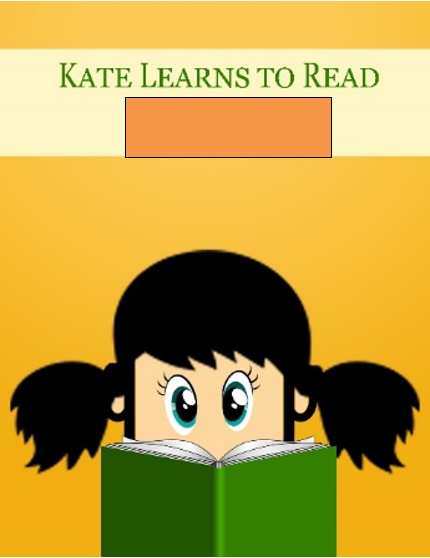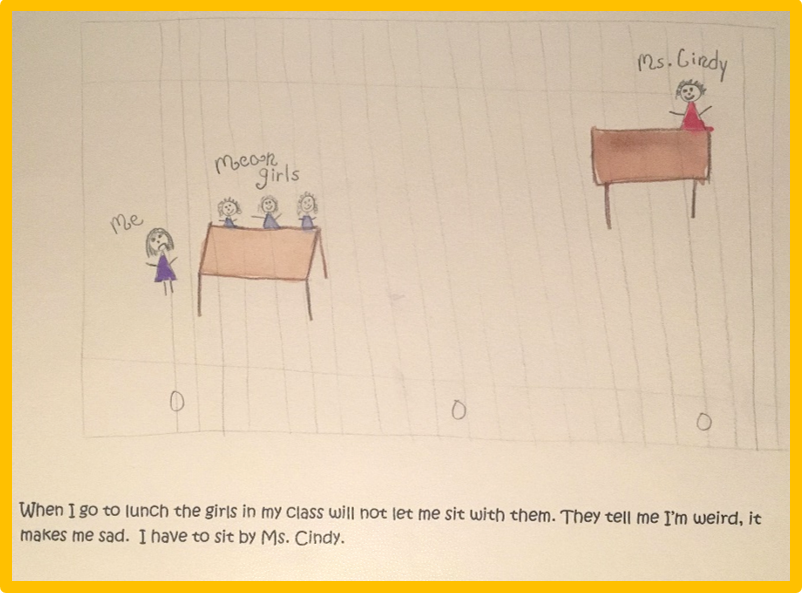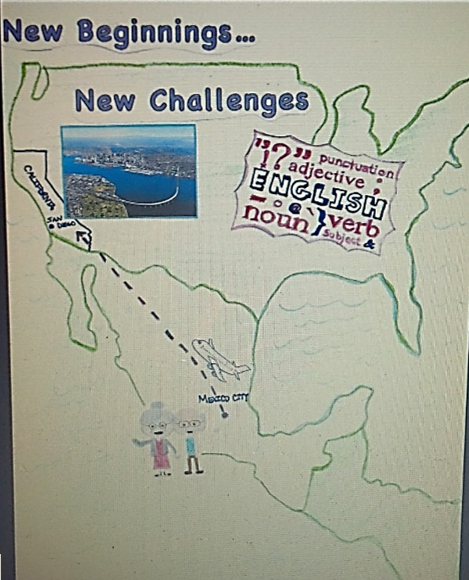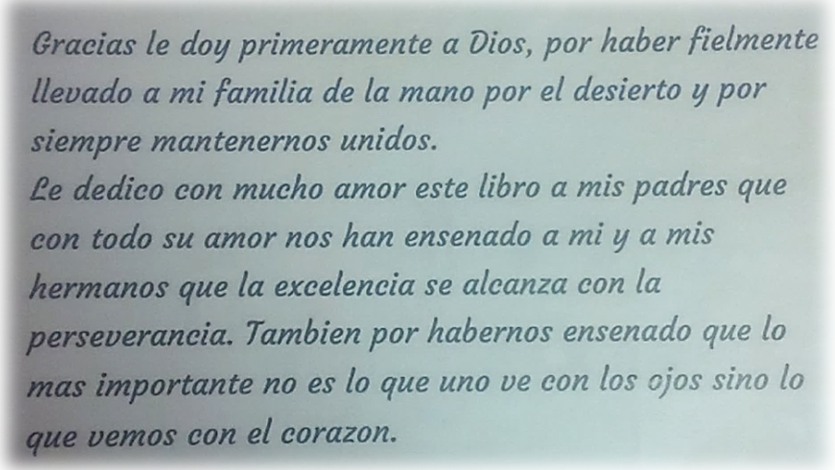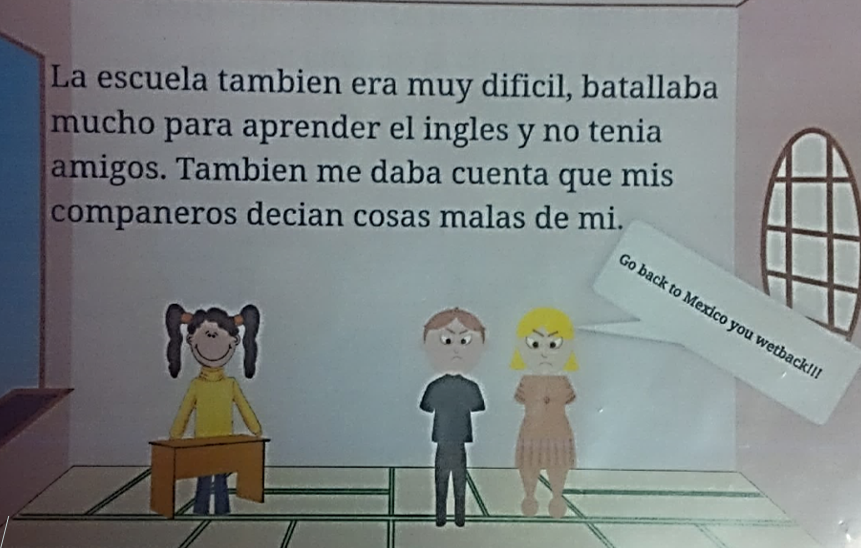Finding Stories That Need to be Told
Maria Elena Salazar
Children’s books offer gateways into unfamiliar worlds for readers, providing avenues for classroom discussions surrounding difficult topics. In my Early Childhood Education (ECE) methods course for pre-service teacher candidates, children’s literature is a central learning tool. Moreover, in this course, I use literature to critique labels like “at risk” that are placed on students based on their cultural identities. I feel such labels cause some students to be viewed by educators and others as less likely to succeed. Instead, I encourage candidates to see students as “at promise” (Swadener & Lubeck, 1995), a belief that students’ cultural identities foster academic success. Therefore, many of my course activities nudge candidates to examine their own beliefs. For instance, I invite them to visit a toy store and document characteristics of toys, such as the ethnicities, abilities, and economic statuses represented, along with differences between toys labeled for girls and toys labeled for boys. Candidates present their findings in class and explain how these will affect their future practice. Another assignment to help candidates gain experience with culturally responsive pedagogy invites them to explore historical educational obstacles of non-mainstream students through the creation of their own multicultural children’s books.
The following vignette describes the journey candidates and I took as we explored this assignment for the first time during the fall 2016 semester. Although we faced issues that need to be resolved, this experience became a worthwhile opportunity, helping candidates understand multicultural children’s literature and exposing them to complex real life issues U.S. students regularly encounter.
Our Learning Community
At the university where I teach, preservice teacher candidates take a core of classes called a “block.” The block consists of core methods classes taught at an elementary school and a practicum component in which candidates partner with a classroom teacher for one semester. For two hours each morning candidates shadow a teacher and work in her/his classroom. At mid-morning they gather for two hours in an on-site classroom for methods instruction. I teach the Early Childhood Education (ECE) course in the block. I designed the course to help candidates understand practices, legislation, licensure, and other content in ECE. Although the course is centered on ECE, I funnel this knowledge through Multicultural Education (MCE). For instance, if the week’s topic is “assessment,” I address cultural bias in tests. In this way, candidates are better prepared to enter American classrooms which are increasingly diverse with regards to student heritage, family structure, and socioeconomics (Cochran-Smith & Villegas, 2014).
The Fall 2016 ECE course was composed of 20 candidates, 14 female, 5 male. Approximately half were Latinx, half were Anglo; all but one was in their early twenties. Most candidates were from the geographic region in which the university resides. As the course progressed, candidates gained familiarity with ECE and MCE. Personal ideologies became more apparent and, aided by children’s literature, helped guide our discussions. In addition, this semester was the candidates first supervised practicum, so they had many questions regarding policy and practice. For example, candidates sometimes found themselves in positions where they had difficulty talking with students, such as when they overheard one student making fun of another student’s clothing. I advised them that one way to dialogue with students about difficult topics is by sharing multicultural children’s literature. However, I realized that while candidates could easily name books by Dr. Seuss and well-known titles like Little Red Riding Hood (Galdone, 1985), they were less familiar with multicultural literature and/or some of its authors.
Pre-service Teacher Candidates’ Knowledge of Multicultural Children’s Literature
Teacher unfamiliarity with multicultural books is consistent with research (Salazar, 2017; Brinson, 2012), partially because multicultural children’s literature comprises only 10% of all children’s literature (Horning, 2013). Further, exclusion of multicultural literature is often the norm in U.S. classrooms due to curricular mandates and/or teacher discomfort in addressing difficult issues (Salazar, 2017; Botelho & Rudman, 2009). This is detrimental to both students and teachers because these books provide classroom spaces for discussing real world issues, such as immigration (Fránquiz, Avila & Ayala Lewis, 2013). These texts are also useful for introducing new ways of thinking, as well as aiding comprehension and interpretation of unfamiliar texts. For instance, students can read social justice-themed texts with topics like parental incarceration and homelessness, without being frightened or negatively influenced. Their cultural schemata allows them to connect to texts and “take an aesthetic stance that contributes to gains in comprehending elements of these stories” (Pilioneta & Hancock, 2012, p. 7).
Coursework that includes candidates’ reflections on their personal histories, cultures, and socioeconomic status, coupled with chances to explore historical and current race relations, better equips them for increasingly diverse classroom contexts. For instance, professional development about books featuring characters of color can increase teachers’ knowledge of non-dominant narratives and help them build non-exclusive classroom libraries (Brinson, 2012). Teachers can also use children’s books to see similarities between cultures (Villegas & Lucas, 2007) and to find out about culturally-specific ways of communicating, learning styles, home/school differences, and build classroom community (Sleeter, 2013).
I created this assignment to give candidates experience with multicultural literature, simultaneously providing opportunities to critically analyze all children’s books. I also sought to improve my own practice by creating more choices in candidates’ writing assignments. I wondered if and how personal interest increases candidate engagement when they decide who and what to write about in literary genres of their choosing.
Setting the Stage for Creating Multicultural Children’s Literature
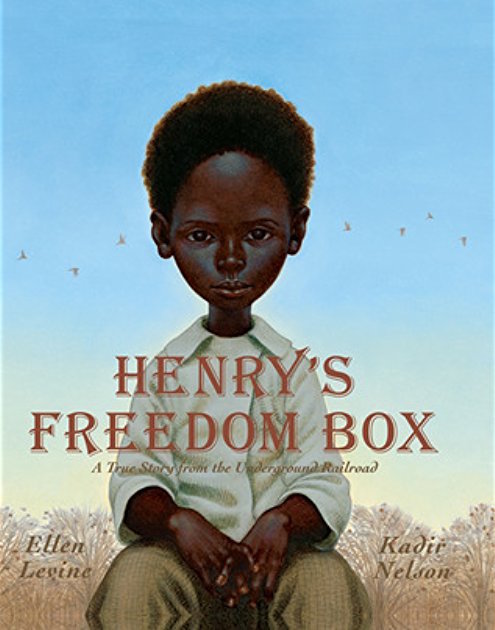
Figure 2. Levine (2007)
We sometimes used Botelho and Rudman’s (2009) Critical Multicultural Analysis (CMA) framework to see if books’ messages may lead to bias against certain groups. CMA critically examines how race, class and gender are portrayed in children’s literature, and how power is distributed. For instance, when looking at gender roles, who the protagonist is and what activities female and male story characters are engaged in contribute to analysis of messages transmitted to readers about gender norms. We analyzed genre, written text, perspective, authors, and storylines. Henry’s Freedom Box (Levine, 2007) presents the reader with a character of color who is full of agency in dire circumstances. However, the author and conglomerate publisher show an appropriation of the stories of people of color as told by those with power, a common critique within multicultural literature (Cai, 2002).
By the end of the semester, we had critiqued many children’s books, including those classified as multicultural. This activity supported candidates’ knowledge of multicultural literature, and helped them see how text elements, such as a sociopolitical stance, affects storyline. Additionally, course dialogue challenged me to be a reflective practitioner. I learned new perspectives from candidates that I may have overlooked based on my own identities. I began identifying my own gaps in knowledge, like unfamiliarity with Asian American children’s literature. Students then began creating their own books.
Creating Multicultural Children’s Books
We began the assignment by interviewing an adult or child. Candidates created a list of interview questions (See Figure 3) to conduct a semi-structured interview (Cohen, Manion, & Morrison, 2007). A semi-structured interview was chosen because it invites conversation-like dialogue and ensured candidates collected the data while letting them pursue avenues of interest during the interview.
Candidates posed questions about the interviewee’s experiences with ECE and then selected one educational event that had a profound effect on the interviewee. An example is one interviewee’s experience as a monolingual Spanish speaker in a U.S. school. Her teacher tutored her, created community-building activities in the classroom, and otherwise helped her ease into the new school environment. This led to a lifelong student/teacher relationship.
Next, candidates chose a book format that they felt could help them effectively tell these stories. They could follow the traditional fairy tale format, beginning with, “Once upon a time…,” and incorporating magic, wicked, good, and royal characters, as well as a happy ending (Green, 2003). This format was intended to help candidates organize their thoughts, keeping in mind that the books sought to be asset-oriented (Cramer & Wasiak, 2006) and promote agency. Other genre formats included poetry, wordless books, postmodern picturebooks and more. Genre and medium were left up to the candidates, but the book could not exceed 15 pages. At the end of the semester, candidates read aloud their books to classmates.
The Read Alouds
Reading the stories aloud provided for multiple early childhood experiences to be shared. Many candidates completed their practicum in classrooms where the read aloud was not a common literacy activity because other mandated reading curricula caused the read aloud to become rushed or pre-scripted (Copenhaver, 2001). Gaining their first experiences with read alouds in our methods class versus classrooms was worrisome to me. Yet the assignment helped these candidates understand the potential power of read alouds in promoting reading as pleasurable while modeling reading performance, among other benefits (Sipe, 2002). This knowledge additionally caused me to rethink how often I use read aloud in my courses, and how I can better teach candidates about this as a curricular tool with countless uses and benefits.
Most of the readings provoked a strong emotional response, such as when candidates applauded the story of a male kindergarten character who was finally permitted to wear pink clothes to school. They reflected on the benefits of reading aloud multicultural literature for themselves and for their classmates (all names are pseudonyms):
During the actual presentation of the book to our class… the entire class was really engaged with the book and provided me with excellent feedback. The presentation was important as we were able to see many different perspectives… Everyone had their own unique story. (Gerónimo)
The read aloud portion of the bookmaking was also an important role in getting our topic across to the class. When we read books it really made a difference in the way you read it. I know my book personalized the reading by making the reading more engaging and dramatic, keeping my audience focused. (Roberto)
I almost cried because hearing my story aloud really makes it real and brings that awareness. As I read aloud, I looked at everyone’s faces and I could see the impact the story had on some people. I really enjoyed being in front of the class presenting because I felt very passionate about it. I had a sense of pride telling the class about my amazing sister and all she has gone through in her life. (Rica)
The benefits cited by candidates included increased student engagement, culturally responsive pedagogy, awareness of societal issues with an avenue to discuss them, and hearing unique stories. Most importantly, the candidates recognized texts like these exist for young readers. Moreover, they experienced the utilization of the Author’s Chair as a powerful practice (Graves & Hansen, 1983). The Author’s Chair occurs when students read aloud a text they have written before audience of their peers and the audience provides questions and feedback. Graves and Hansen (1983) contend that authoring and then reading one’s texts improves understanding of the writing process, literacy skills, and candidates’ meaning making of texts. By reading their books aloud, candidates tapped into these benefits, as well as other Author’s Chair attributes, such as confidence and voice in public speaking, working with peers, and realizing their stories have value. This activity caused me to reflect on my pedagogy and whose perspectives need more inclusion in my teaching contexts. It reinforced my belief that creating and telling stories empowers candidates as well.
In-class talks about the student-made books featured protagonists overcoming obstacles, saving the day, etc. However, one teacher candidate, Kerry, approached me the week before we were to present the books and wondered about sharing an interviewee’s story that did not have a happy ending.
Spontaneously, I told Kerry to try her best. When she read her book, Estevan’s Song, I realized these parameters are not always compatible with the real world. The other candidates and I sat silently as Kerry read her tale of an academically unsuccessful boy who plays his guitar in his bedroom as an emotional escape. Although a teacher recognizes his artistic talents, the book concluded with him retreating to his room, playing his guitar, and grudgingly awaiting another academic year in remedial classes. Multicultural books, by definition, should include these perspectives so that candidates can think critically about real life issues. Thanks to Kerry, I have modified this assignment so that more accuracy, including unhappy endings and a lack of agency can be shared.
The Results
Using Botelho and Rudman’s (2009) framework to aid in creation of stories and peer-assessment, candidates exceeded my expectations. Experiences recorded during this semester encompassed gender bias, bullying, and single parent homes. One book, with minimal color and graphics, moved candidates to tears. Sparse, first person text about an orphaned girl too shy to speak in school was met with sighs. The ending spoke to inner courage as the girl takes a deep breath before she enters a spelling bee.
Another especially powerful story centered on Rica’s sister’s lived experiences with mental impairment. First person narration with childlike drawings on lined notebook paper led to reading this book through a child’s eyes.
The protagonist sat alone on the playground because the other children “did not want to catch her disease.” Rica stopped reading often to highlight her sister’s strengths; the book epitomized the power of the written word.
Genre was considered in text production. Diego said, “The genre I think worked well with the simplicity of the book. The picture book is great for young readers who can draw meaning from the images and help with the text.” Alejandra noted, “I chose nonfiction because gender stereotypes have been occurring and still do occur every day. I wanted children to see themselves within the book and be able to connect with it based on their real-life experiences.” Others, likewise, noted that nonfiction is a relatable genre for many students.
Linguicism, or discrimination based on one’s native language, was especially salient. This might be connected to these candidates’ practicum experiences in a dual language school in the southwest border region of the US.
The prominence of this issue and the current U.S. sociopolitical climate devaluing Latinx identity reflected a historical issue. The books made visible and led to debate surrounding public discourse, policy and practice for emerging bilinguals in U.S. schools. Though many candidates presented texts about Mexican American/Chicanx peoples, their books offered many viewpoints of this group. For example, Matilda wrote about her grandmother, whose family has lived in New Mexico since long before it became a U.S. territory and then a state. Her tale illustrated the foreignization of this native population.
Cristina chose to write her book in Spanish to “honor the voice of the interviewee,” a woman whose father was a doctor in Mexico but became a manual laborer upon entering the U.S. due to discrimination and other barriers. She explained,
Learning about what happened to them early in their life was so eye-opening since her story was so similar to mine. She told me how she lost her identity due to the bullying of her native culture. As she grew up and became in-tune with herself through the acceptance of others she vowed to never let the ignorance of others affect her identity. The topic of my book was how common it is even nowadays to lose native culture and language because of bullying and how hard it is to accept one’s own identity once it’s been frowned upon by society.
Various stories disrupted biases of immigrants as poor, underclass hoards wanting to come to the U.S. (Sung, Fahrenbruck, & López Robertson, 2017). Instead, pre-service teachers realized immigrants are not a static group who all strongly desire to leave what they know to become strangers in a foreign land. In all, the books prompted discussions that connected to candidates’ lived experiences and caused self-reflection. Because of these collaborations, candidates cited a desire to transform their pedagogies to include more acceptance of others.
The interview was especially profound for Diego: “I think the interview was the most important part of this process. It really gave me a purpose for the book…” Elizabeth said of her interviewee, “He told me he never really talked about those years because it was a difficult time in his life. I was thankful for the opportunity to learn about his life.” Ruby said:
We had talked about her experiences a while back, but never got too in-depth about her feelings about these experiences. I was glad to have the opportunity to see someone else’s personal perspective about how teachers have the power to create positive and/or negative environments.
Other Gains
Candidates learned more about ideology in children’s books, the power of illustrations, and how written words and images work together from this activity. Sofia said,
The topic of my book was social anxiety… I do believe that I could have conveyed the story better. In books that I have read, some of them have information in the back about the topic to help readers better understand the books. This is something that I would do the next time I write a book.
These insights show how learning about text features help educators read the messages various genres are prone to convey. Illustrations were noted as difficult to create, partly due to the message an author wants to send. “I gained appreciation for illustrators… I enjoyed looking at my work and taking pride in my drawings” (Alejandra). Another student, Janice, added, “It was harder than I thought it would be to try and match the drawing to the text and to show meaning… Illustrations provide a lot of meaning and insight into the text so they are important.”
Candidates mentioned texts as difficult to create. Beverly wrote:
The text was hard for me because I had a hard time figuring out what information to keep in the book and what to leave out. I also had a really hard time simplifying the text for early childhood education. I wanted to put a lot more text on each page, but I knew that there could not be much text on each page for young readers.
Candidates consciously reflected on the intentionality used to create a children’s book. Overall, candidates said that this assignment was a rewarding experience. Leticia said,
The children’s book project was enjoyable for me… it made me more aware of my interviewee’s struggles growing up… It made me appreciate her as a friend and person that much more. Although struggles are never fun, they do help us grow and I would like to implement that in my classroom and with my students one day.
Beverly wrote:
I really liked the multicultural topic to write about because I believe that most people keep their multicultural experiences to themselves… stories need to be told and shared because it helps people become aware of the struggles children go through.
Multicultural texts endearing to their author was perhaps an ultimate gain for some.
The responses from candidates indicated the need to improve their knowledge base in sociopolitical and historical contexts. Some have since taken initiative by assembling their own text sets, or a collection of books on a specific topic, for their practicum classrooms. My hope is that they will strive for variety in the literature they share with their future students and create diversity-inclusive classrooms.
I will use this assignment again in anticipation of being astonished with student outcomes. In the future, however, I will have candidates share and revise their drafts in small groups before they present their books to the class. In this way, candidates can act as peer editors, learning to critique each other’s work. They will also have the chance to clarify and revise areas in their work that may be unclear to readers.
Final Thoughts
The idea of student-created multicultural literature arose while I was a graduate student assisting in a multicultural education course. The syllabus was packed with activities but left little time to deeply explore multiculturalism in ECE classrooms. Further, I wanted candidates to have multicultural texts in their hands that they could share with students in their future classrooms. I have learned much from the candidates creating multicultural children’s books. One important take-away is that student choice in writing assignments increases student engagement and quality of work (Welner & Cohen, 2007). Another is the value of the Author’s Chair (Graves & Hansen, 1983). Student voice, respect, community-building, learning from peers, and honoring students’ lived experiences are but a few of its pedagogical assets.
With this experience, candidates constructively immersed themselves in multicultural education and critical dialogue. Books helped candidates see students as human beings who come to school and face many obstacles, often associated with their forms of difference. Megan said,
I enjoyed the topic a lot. I have been learning a ton about learning disabilities and how important it is to be inclusive. Students love being with their peers, and they really want to learn. Teachers should always try to keep all the students as included as they can be… Students can learn if they are in an environment that fosters and cares for them as a person.
Rica realized, “Bringing these topics into light is important and demonstrates how reality is constructed every day.” I encourage other teachers to make books in their classrooms.
Phillip noted,
By making a book it gave me a greater appreciation for children’s books. The other aspect of this book is that it gave me a chance to make a project for my students. I think that it was great and I would do it in my own classroom.
The assignment put many differences into perspective, but ultimately spoke to providing “every student with the best education they DESERVE!” (Gerónimo).
References
Botelho, M. J., & Rudman, M. K. (2009). Critical multicultural analysis of children’s
literature: Mirrors, windows, and doors. New York: Routledge.
Brinson, S. A. (2012). Knowledge of multicultural literature among early childhood educators, Multicultural Education, 19(2), 30-33.
Cai, M. (2002). Multicultural literature for children and young adults. Reflections on critical issues. Westport, CT: Greenwood Press.
Cochran-Smith, M., & Villegas, A. M. (2014). Framing teacher preparation research: An overview of the field, part 1, Journal of Teacher Education, 66(1), 7-20.
Cohen, B., & Welner, D. (2007). Writing from a personal perspective: A story of two classrooms. In Y. Goodman & P. Martens (Eds.), Critical issues in early literacy. Research and pedagogy (pp. 97-110). New York: Routledge.
Cohen, L., Manion, L., & Morrison, K., (2007). Research methods in education. (6th ed.). London: Routledge Falmer.
Copenhaver, J. F. (2001). Running out of time: Rushed read-alouds in a primary classroom. Language Arts, 79(2), 148-158.
Cramer, K., & Wasiak, H. (2006). Change the way you see everything through asset-based thinking. Philadelphia, PA: Running Press.
Fránquiz, M. E., Avila, A., & Ayala Lewis, B. (2013). Engaging bilingual students in a sustained literature study in central Texas. Journal of Latino/Latin American Studies, 5(3), 142-155.
Graves, D., & Hansen, J. (1983). The author’s chair. Language Arts, 60(2), 176-183.
Green, A. (2003). Ann Green. In E. P. Quintero & M. K. Rummell (Eds.), Becoming a teacher in the new society: Bringing communities and classrooms together. New York: Peter Lang.
Harris, V. (1993). Teaching multicultural literature in grades K-8. Norwood, MA: Christopher-Gordon Publisher, Inc.
K Horning. (2013, July 11). I see White people. [Web log comment]. Retrieved from http://ccblogc.blogspot.com/2013/07/i-see-white-people.html.
Pilioneta, P., & Hancock, S. D. (2012). Negotiating first graders’ reading stance: The relationship between their efferent and aesthetic connections and their reading comprehension, Current Issues in Education, 15(2), 1-10.
Salazar, M.E. (2017). A Chicana feminist and Critical Multicultural Analysis case study of ideology in children’s literature and early childhood education read alouds. (Unpublished doctoral dissertation) New Mexico State University, Las Cruces, NM.
Sipe, L. R. (2002). Talking back and taking over: Young children’s expressive engagement during storybook read aloud, The Reading Teacher, 55(5), 476-483.
Sleeter, C. E. (2013). Power, teaching and teacher education. New York: Peter Lang.
Stewart, M. P. (2002). Judging authors by the color of their skin? Quality Native American children’s literature, MELUS, 27(2), 179-196.
Sung, Y. K., Fahrenbruck, M. L., & Lopez-Robertson, J. (2017). Using intertextuality to unpack representations of immigration in children’s literature. In H. Johnson, J. Mathis, & K. G. Short (Eds.), Critical content analysis of children’s and young adult literature. (pp. 44-60). New York: Routledge.
Swadener, B. B., & Lubeck, S. (Eds.). (1995). Children and families “at promise:” Deconstructing the discourse of risk. Albany, NY: State University of New York Press.
Villegas, A. M., & Lucas, T. (2007). The culturally responsive teacher, Educational Leadership, 64(6), 28-33.
Children’s Books Cited
Cherry, L. (2000). The great Kapok tree: A tale of the Amazon forest. Boston, MA: HMH.
Galdone, P. (1985). Little red riding hood. Boston, MA: HMH.
Levine, E. (2007). Henry’s freedom box. Illus. K. Nelson. New York: Scholastic.
Maria Elena Salazar teaches Early Childhood Education courses in the Program of Family and Child Studies, College of Education, at the University of New Mexico.
WOW Stories, Volume V, Issue 4 by Worlds of Words is licensed under a Creative Commons Attribution-NonCommercial-ShareAlike 4.0 International License.
Based on a work at https://wowlit.org/on-line-publications/stories/wow-stories-volume-v-issue-4/2.

